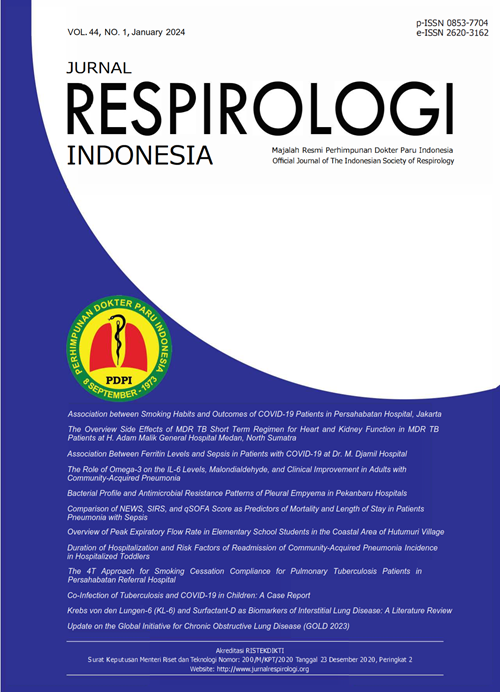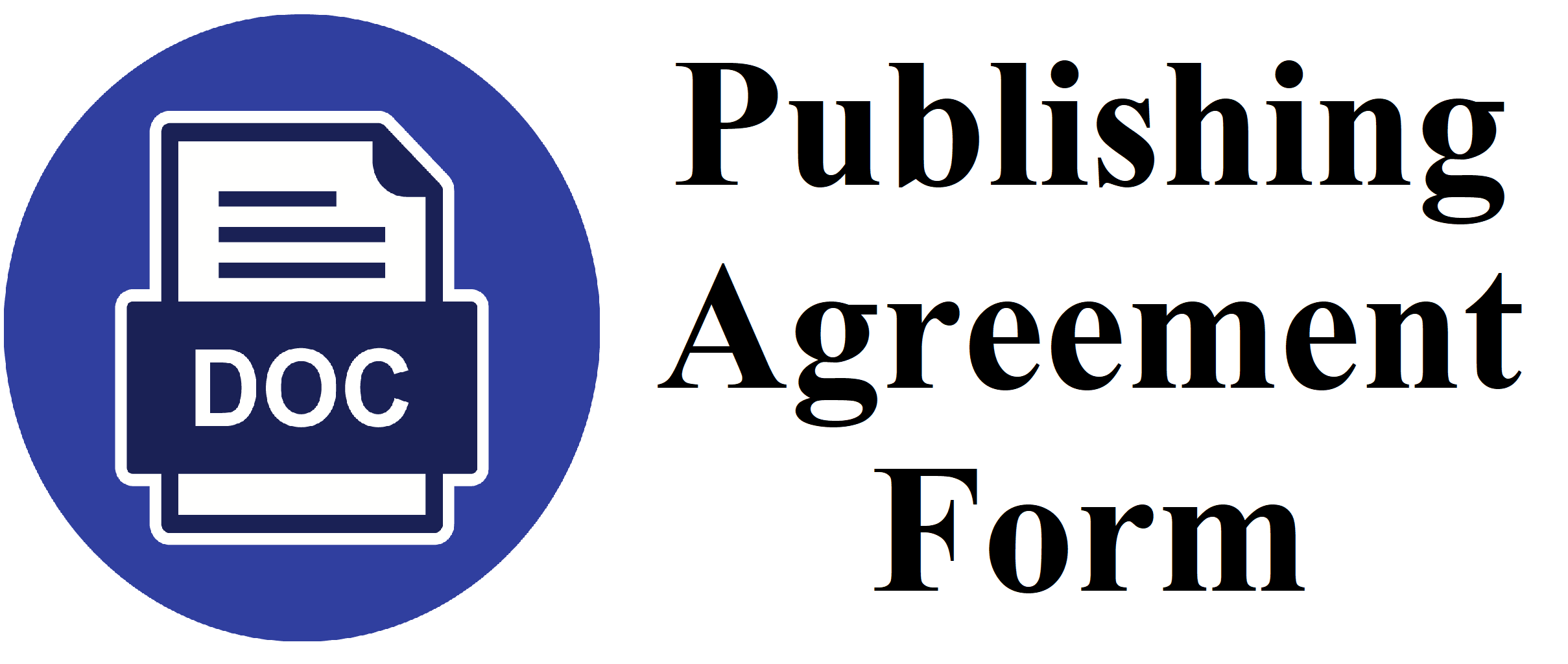Overview of Peak Expiratory Flow Rate in Elementary School Students in the Coastal Area of Hutumuri Village
DOI:
https://doi.org/10.36497/jri.v44i1.466Keywords:
coastal, obstructive disorder, peak expiratory flow rateAbstract
Background: Respiratory diseases are the most common cause of death in children, in this case most of them are obstructive disorders. Peak expiratory flow (PEF) is a tool for detecting airway obstruction, which the value is influenced by host and environmental factors. Examination of PEF aims to describe the condition of the large-calibre airway. A decrease in PEF values indicates an expiratory airways resistance. This study aimed to determine how the condition of pulmonary physiology in children living in the coastal area, with peak expiratory flow parameters in elementary school students in coastal areas, area of Hutumuri Village.
Methods: The design used in this study was descriptive quantitative with cross-sectional method. This study took variables in the group of children aged 8-13 years, the group of children with weight between 15-36 kg, height of 118-139 cm, the group of children with a hobby of swimming, the group of children with a history of respiratory disease. The sampling technique used was total sampling with a total of 215 respondents in four elementary schools located in Hutumuri Village, South Leitimur District, Ambon City which included 53 Batu Gong Elementary School, Toisapu Elementary School, 52 Lawena Elementary School and Hutumuri Christian Elementary School.
Results: The value of PEF rate increased in the group of children with aged ≥12-13 years, the group of children with body weight ≥36 kg, the group of children with height ≥139 cm, the group of children who did not have a history of respiratory disease, and the group of children with swimming as hobby.
Conclusion: The average value of PEF in children who live in coastal areas had increased and of the 215 respondents studied, most were found in the normal PEF group or the percentage of 80-100% with 114 respondents (53.0%).
Downloads
References
Shubhankar M, Asish B, Geetanjali S, N SN. Study of peak expiratory flow rate of school children of South Odisha. Scholars Acad J Biosci. 2015;3(5):429-433.
Kementerian Kesehatan RI. Hasil Utama Riskesdas 2018.; 2018.
Nur A, Amin M, Sajidin M, Kusnanto. Gambaran arus puncak ekspirasi (APE) dan kontrol asma pada pasien asma. Jurnal Penelitian Kesehatan Suara Forikes. 2019;10(3):193-198.
Putra DA, Salimo H, Andarini I. Hubungan parameter antropometri dengan nilai arus puncak ekspirasi pada remaja di Surakarta. Sari Pediatri. 2019;20(6):349-353.
Cempaka Putri R, Dwi Primayanti IDAI, Sri Handari LMI, Adiartha Griadhi IP. Perbedaan nilai arus puncak ekspirasi pada wanita usia produktif penderita asma yang mengikuti latihan zumba dan yoga. Sport and Fitness Journal. 2020;8(2):84-90.
Tambunan RD, Danes VR, Lintong F. Perbandingan kapasitas vital paru pada pelajar di dataran tinggi Tomohon dengan pelajar di dataran rendah Manado. eBiomedik. 2016;4(1).
Rosetya MI. Perbedaan Antara Nilai Arus Puncak Ekspirasi Sebelum Dan Sesudah Olahraga Renang Selama Dua Belas Minggu. Skripsi. Universitas Diponegoro; 2011.
Kusumo H. Hubungan rentang rangan dan fungsi paru pada anak asma. Medica Hospitalia: Journal of Clinical Medicine. 2016;3(3):181-186.
Sudarmawan DA, Arkhaesy N, Anam MAM. Perbedaan hasil fungsi paru pada remaja dengan osa (obstructive sleep apneu) dan tanpa osa. Jurnal Kedokteran Diponegoro (Diponegoro Medical Journal). 2019;8(2):681-692.
Hall JE, Hall ME. Pulmonaru ventilation, pulmonary circulation, pulmonary edema, and pleural fluid . In: Guyton and Hall Textbook of Medical Physiology. 13th ed. Saunders; 2016:465-492.
Andar NA, Indraswari DA, Utami A. Perbandingan nilai arus puncak ekspirasi pada lansia wanita yang rutin berenang dan yang tidak rutin berenang. Jurnal Kedokteran Diponegoro. 2018;7(2):615-626.
Shiyas K, Mohan G. Factors affecting peak expiratory flow rates in children of 9–12 years of age. International Journal of Pediatric Research . 2017;4(11):651-656.
Kartikasari D, Jenie IM, Primanda Y. Gambaran arus puncak ekspirasi pasien asma ringan-sedang di rumah sakit paru respira Yogyakarta. Jurnal Ilmu Kesehatan. 2018;11(1):331-337.
Ganong WF. Fungsi pulmonari, regulasi respirasi. In: Barrett KE, Barman SM, Boitano S, Brooks HL, eds. Buku Ajar Fisiologi Kedokteran. 24th ed. EGC Medical; 2012:621-657.
Downloads
Additional Files
Published
Issue
Section
License
- The authors own the copyright of published articles. Nevertheless, Jurnal Respirologi Indonesia has the first-to-publish license for the publication material.
- Jurnal Respirologi Indonesia has the right to archive, change the format and republish published articles by presenting the authors’ names.
- Articles are published electronically for open access and online for educational, research, and archiving purposes. Jurnal Respirologi Indonesia is not responsible for any copyright issues that might emerge from using any article except for the previous three purposes.
















